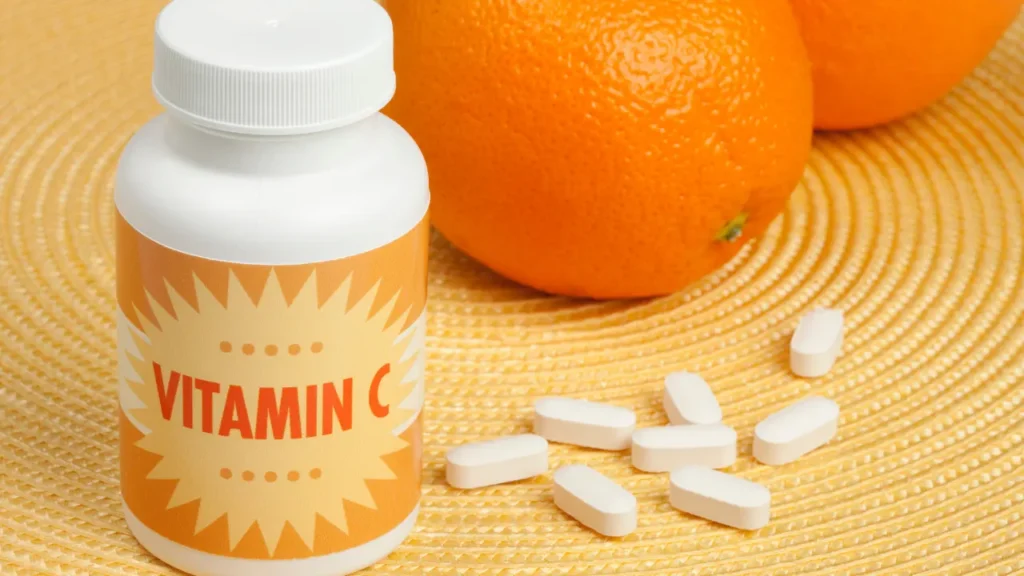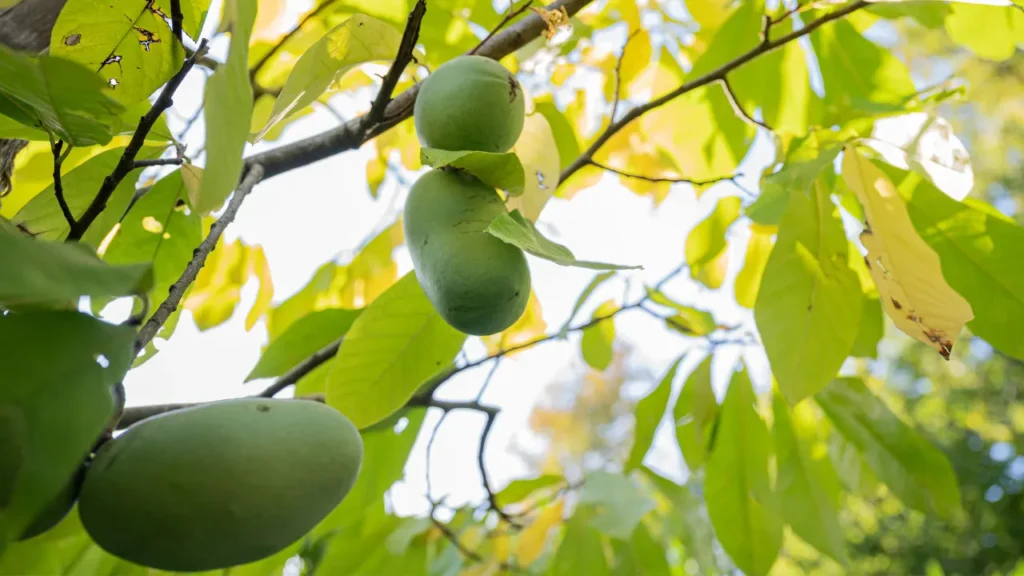Due to its distinct flavor and rumored health advantages, the American pawpaw (Asimina triloba), a native fruit-bearing tree of the United States, has grown in popularity recently. Although early American settlers and indigenous peoples have long ingested the fruit, researchers have recently started looking into its potential as a nutritious supplement. This article explores the characteristics, health advantages, recommended dosage, adverse effects, possible drug interactions, and responsible use of the American pawpaw as a dietary supplement. Additionally, it gives a thorough description of the chemistry of the American pawpaw as well as the physiological processes that underlie its effects on the body and brain.
You May Also Like:
What is Non Restorative Sleep? Here are 5 Great Ways to Get Quality Rest Every Night
American Pawpaw: Benefits, Dosage, Side Effects, Drug Interactions, And Other Important Information is an original (NootropicsPlanet) article.
The Nature of the American Pawpaw
A small to medium-sized deciduous tree, the American pawpaw can be found in the eastern United States, from the Gulf Coastal Plain to the Midwest. Its fruit has a custard-like texture and a flavor that has been compared to a combination of banana, mango, and melon. The fruit looks similar to a mango or a papaya. The fruit is full of phytochemicals, vitamins, and minerals that have been linked to a number of health advantages.
Health Benefits of the American Pawpaw
Antioxidant Capabilities
The American pawpaw’s high levels of carotenoids, other phytochemicals, and vitamins C and E give it its antioxidant benefits. Free radicals are unstable chemicals that can harm cells and lead to the emergence of chronic diseases. These substances neutralize free radicals. The antioxidants in pawpaw may offer defense against diseases like cancer, heart disease, and neurological illnesses by lowering oxidative stress.
Anti-Cancer Possibilities
Asimicin, in particular, has shown acetogenins to have cytotoxic effects on a number of cancer cell lines, including those from the breast, colon, lung, and prostate. By preventing the mitochondrial complexes from functioning, these substances seem to target cancer cells only, ultimately causing cell death. A potential synergistic effect of asimicin has also been demonstrated to increase the cytotoxic effects of chemotherapeutic medicines like doxorubicin.
Effects of Neuroprotection
According to preliminary research, acetogenins found in American pawpaws may have neuroprotective properties that could help people with neurodegenerative diseases, including Alzheimer’s and Parkinson’s. In animal models of Parkinson’s disease, these substances have been found to inhibit the creation of amyloid, a protein linked to the onset of Alzheimer’s, and to prevent the death of dopaminergic neurons.

Chemistry of the American Pawpaw
The American pawpaw contains acetogenins, a class of long-chain fatty acids with a terminal-lactone ring, the main bioactive components. Asimicin, the most common acetogenin discovered in American pawpaw fruit, was proven to have strong cytotoxic and anti-tumor activities in vitro. Carotenoids, such as lutein, zeaxanthin, and -carotene, are additional bioactive components that function as antioxidants and may contribute to the fruit’s health advantages. The fruit is also a fantastic source of vitamins C and E and several B vitamins and essential minerals, including potassium, magnesium, and iron.
Physiological Mechanisms of Action
Appreciating the American pawpaw’s potential health benefits requires knowledge of the physiological mechanisms through which its bioactive components exert their effects. Here, we go through how the three main bioactive substances in American pawpaw—acetogenins, carotenoids, and vitamins—work physiologically.
Acetogenins
It has been discovered that acetogenins, such as asimicin, possess strong anti-cancer capabilities. These substances target the mitochondria of cancer cells, specifically blocking complex I of the electron transport chain, to produce their deadly effects. This inhibition results in a reduction in the production of adenosine triphosphate (ATP), which then sets off a series of actions that include an increase in the creation of reactive oxygen species (ROS), depolarization of the mitochondrial membrane, and the release of cytochrome c. Caspases are ultimately activated, and cancer cells undergo apoptosis or programmed cell death.
The acetogenins found in American pawpaws have also been shown to have neuroprotective properties by regulating the formation and aggregation of amyloid, a protein thought to have a role in the progression of Alzheimer’s disease. Acetogenins have shown protective effects on dopaminergic neurons in Parkinson’s disease animal models by lowering oxidative stress and preventing the activation of microglial cells, which contribute to neuroinflammation.
Carotenoids
Lutein, zeaxanthin, and beta-carotene are examples of carotenoids that function as antioxidants and shield cells from oxidative stress by dissipating free radicals. These substances can scavenge peroxyl radicals and quench singlet oxygen, lowering lipid peroxidation and preventing cellular damage. Carotenoids may also aid in preventing cancer because they have been linked to the control of cell division, differentiation, and death.
Vitamins
Vitamins C and E are abundant in American pawpaw, further contributing to its antioxidant effects. Ascorbic acid, often known as vitamin C, is an antioxidant that can disarm free radicals in the aqueous phase of cells. Other antioxidants, like vitamin E, can also be renewed by it, strengthening their protective properties. A fat-soluble antioxidant called vitamin E is very good at halting lipid peroxidation and shielding cell membranes from oxidative damage.

Optimal Dosage of the American Pawpaw
Due to the dearth of human trials, there isn’t a recommended dosage for using American pawpaw as a nutritional supplement. However, according to anecdotal evidence, consuming American pawpaw fruit in moderation as part of a balanced diet may offer health benefits. More research is required to establish the best dosage and composition for particular medical conditions.
Side Effects of the American Pawpaw
Although the American pawpaw is usually considered safe to eat, some people may encounter minor adverse effects. These include the possibility of experiencing gastrointestinal discomfort, such as bloating, gas, or diarrhea, especially when ingested excessively. The fruit also contains annonaceous acetogenins, which have been connected to atypical Parkinsonism in some people with a history of consuming large amounts of other fruits from the Annonaceae family. The chance of getting atypical Parkinsonism from consuming American pawpaw is, however, regarded to be low, and additional study is required to grasp this potential risk completely.

Potential Substance Interactions with the American Pawpaw
It is important to consider possible interactions between the American pawpaw and medicines or other drugs, just like with any dietary supplement. The cytotoxic effects of acetogenins may theoretically augment the effects of chemotherapy treatments or other pharmaceuticals having cytotoxic qualities, even though no specific drug interactions have been identified. Additionally, the antioxidant components in pawpaw may interact with drugs that have anti- or pro-oxidant qualities, possibly changing their effects. Before adding American pawpaw or any other nutritional supplement to your routine, speak with a medical expert, especially if you are using medication or have a history of health issues.
Best Responsible Uses of the American Pawpaw
The following rules must be followed to use American pawpaw as a dietary supplement to its full potential:
- Consume in moderation: Although the ideal American pawpaw dosage has not yet been established, including the fruit in your diet occasionally may have positive impacts on your health.
- Select ripe fruit: Eating ripe fruit guarantees that the bioactive components in American pawpaw are at their highest concentrations. Full ripe American pawpaws have a potent aroma, a smooth texture, and a deep yellow-to-orange hue.
- Proper storage: Keep the fruit at room temperature until it is ripe, then place it in the refrigerator for up to a week to preserve its nutritional value. Additionally, American pawpaw pulp can be frozen for later use.
- Speak with a medical expert: If you’re thinking about utilizing American pawpaw as a dietary supplement to treat a particular health issue or taking medications, consult with a healthcare professional to discuss potential risks, benefits, and interactions.
American Pawpaw:
Conclusion
While these potential health benefits are promising, more research, particularly clinical trials involving human subjects, is needed to confirm the efficacy and safety of American pawpaw supplements for various health conditions. Nonetheless, incorporating American pawpaw into a varied diet can be a flavorful and nutritious way to enhance overall well-being.
Low in calories and high in fiber, American pawpaw helps promote satiety, regulate appetite, and support weight management goals as part of a balanced diet. Individuals should consult with a healthcare professional before adding any new supplement to their regimen, especially if they have underlying health conditions or are taking medications.

References:
- Pawpaw shows promise in fighting drug-resistant tumors Retrieved from: https://www.academia.edu/7185281/Pawpaw_shows_promise_in_fighting_drug_resistant_tumors
- The North American Pawpaw: Botany and Horticulture Retrieved from: https://www.researchgate.net/publication/229446176_The_North_American_Pawpaw_Botany_and_Horticulture
- Annonaceous acetogenins: recent progress. Retrieved from: https://pubmed.ncbi.nlm.nih.gov/10096871/
Important Note: The information contained in this article is for general informational purposes only, and should not be construed as health or medical advice, nor is it intended to diagnose, prevent, treat, or cure any disease or health condition. Before embarking on any diet, fitness regimen, or program of nutritional supplementation, it is advisable to consult your healthcare professional in order to determine its safety and probable efficacy in terms of your individual state of health.
Regarding Nutritional Supplements Or Other Non-Prescription Health Products: If any nutritional supplements or other non-prescription health products are mentioned in the foregoing article, any claims or statements made about them have not been evaluated by the U.S. Food and Drug Administration, and such nutritional supplements or other health products are not intended to diagnose, treat, cure, or prevent any disease.


